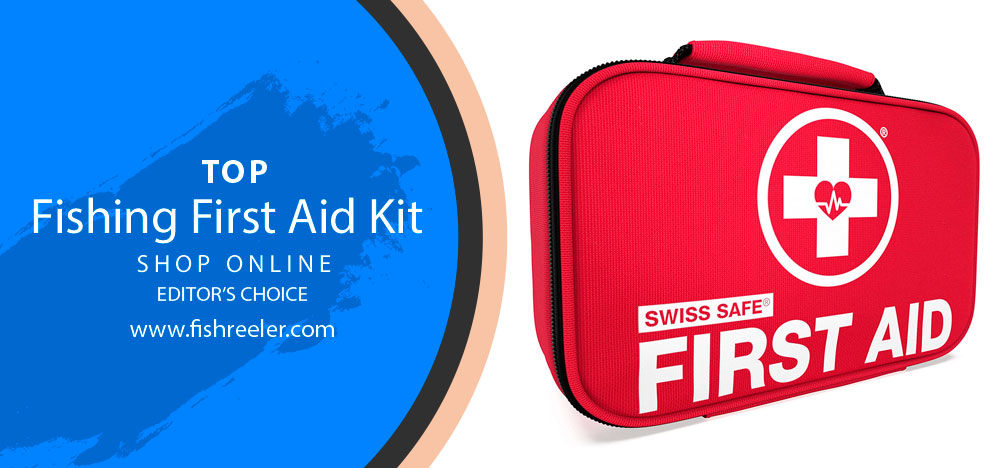
Catch and Care: Mastering Safety with a Comprehensive Fishing First Aid Kit
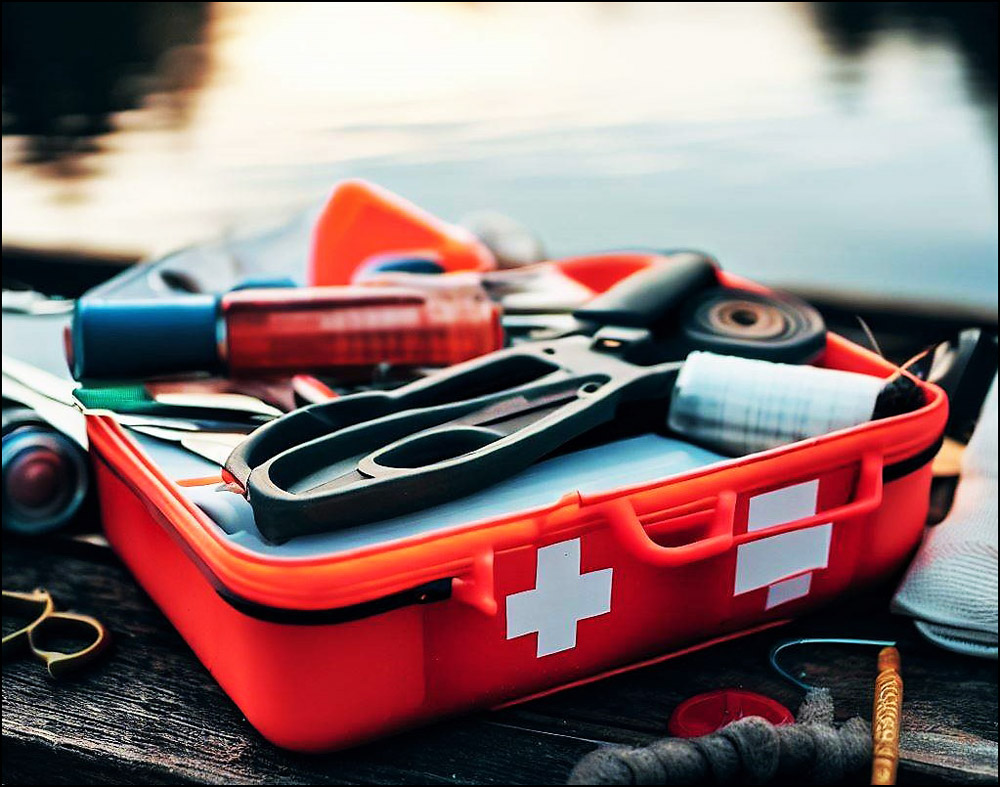
Last summer, during an annual fly-fishing trip, a seemingly routine day on the river took a sudden, unexpected turn. My fishing partner, Jack, always the enthusiastic angler, managed to embed a fishhook in his hand while casting. Miles away from the nearest medical facility, we were left with nothing but nature’s silence and our own resources to handle the situation. What turned that crisis into a manageable situation was the presence of our humble but mighty fishing first aid kit.
It’s this firsthand experience, among others, that emphasizes the importance of preparedness in the unpredictable world of fishing. Like a trusty rod or a favorite lure, a comprehensive first aid kit has earned its place in every angler’s essential gear list. Whether you are heading to the quiet streams or the deep sea, fishing adventures can always take an unexpected turn. When they do, a first aid kit can mean the difference between a quick, effective response and a potentially dangerous situation.
This simple box or bag, packed with essential medical supplies, is a fishing first aid kit. Though it may not top the list of items you pack for a fishing trip, its relevance is unquestionable. In the face of injuries that range from simple hook pricks to serious wounds, the first aid kit is the first line of defense.
🚩So, whether you’re a seasoned angler or someone just getting their feet wet, understanding the importance of a well-stocked first aid kit is crucial. Because when you’re out in the great outdoors, waiting for that next big catch, it’s not just about the fish, it’s about your safety too. This article aims to delve deep into the importance of a fishing first aid kit, discussing its components, customization, maintenance, and its use in real-life scenarios. Consider this your comprehensive guide to staying safe while pursuing the sport you love.
Risks and Hazards Involved in Fishing
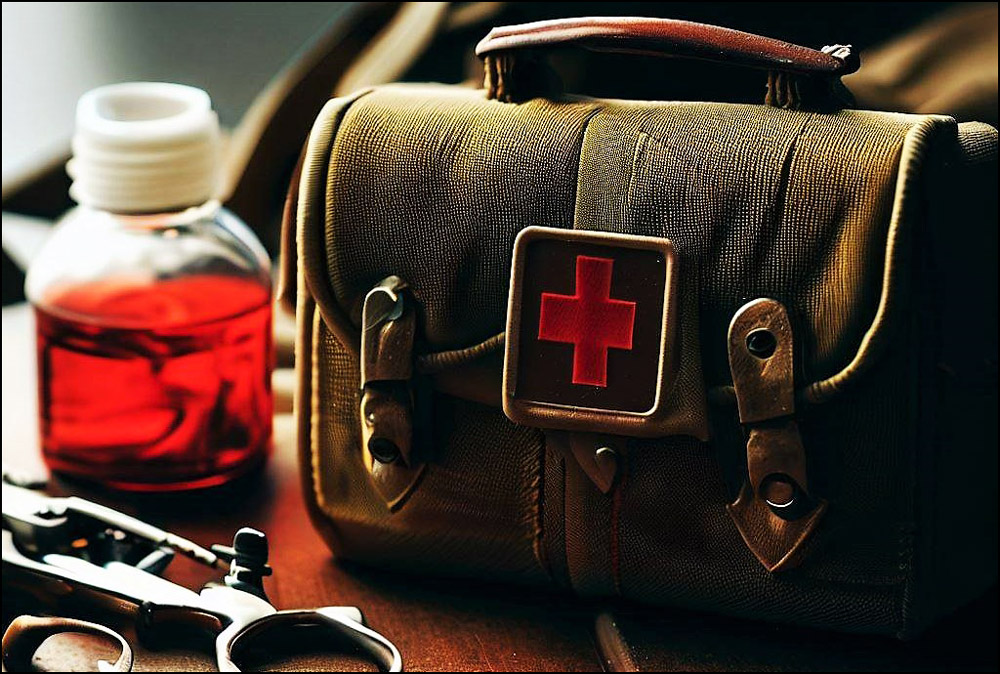
Fishing is a tranquil pastime, a bonding experience with nature that offers peace and solitude. However, as serene as it may be, it’s not without its perils. Anglers, regardless of their experience level, can be subject to a variety of injuries and accidents. It is crucial to know what these potential hazards are, as it is only by understanding the risks involved that can we truly ensure our safety and well-being while fishing.
Casting Cautiously: Understanding the Risks of Fishing
One of the most common injuries in fishing is cuts and scrapes, which can occur from handling sharp hooks, fishing lines, or fish with sharp fins or teeth. These injuries, while often minor, can become serious if not properly cleaned and treated due to the risk of infection, especially when fishing in saltwater environments where bacteria thrive.
A more specific fishing-related hazard involves fishhooks. It’s not uncommon for hooks to become embedded in a fisher’s skin, a situation that can be painful and tricky to manage, especially if the hook is barbed. Attempting to remove an embedded hook without the proper tools and knowledge can lead to further injury.
Sunburn is another often overlooked but important concern. Many fishing expeditions can last for hours under the scorching sun, and prolonged exposure can lead to severe sunburn, sun poisoning, or even long-term damage like skin cancer. Therefore, sun protection measures are an integral part of fishing safety.
Navigating the Tide: Common Hazards in the Fishing World
Then there are the more severe, though less common, risks like deep wounds from boating accidents or potentially harmful encounters with marine life in different fishing environments. While these incidents are rarer, their implications can be serious, further highlighting the importance of preparedness.
Understanding these hazards emphasizes the significance of a well-stocked first aid kit while fishing. It’s not about expecting the worst but being equipped to deal with the unexpected. A good first aid kit can address minor injuries on the spot, preventing them from escalating into major problems. In more serious situations, it can provide immediate, temporary treatment until professional medical help is accessible. In essence, a fishing first aid kit acts as an angler’s safety net, ensuring that our enjoyment of the sport isn’t marred by preventable mishaps or unmanageable emergencies.
Casting Safety Lines: A Comprehensive Guide to Fishing First Aid Kits
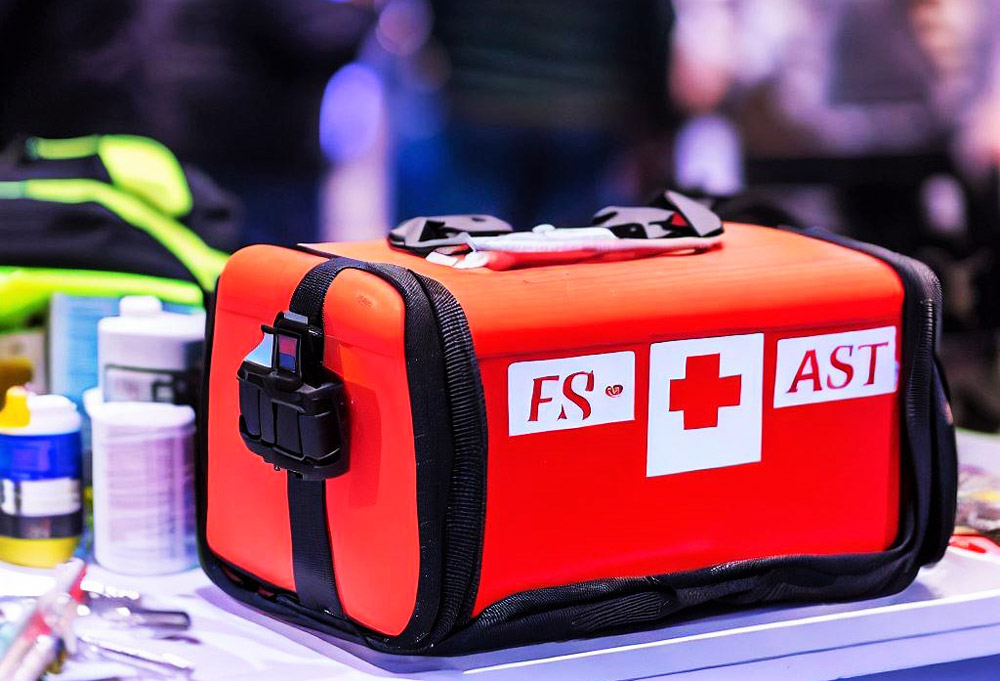
Recent decades have been marked by a sharp increase in the number of accidents, injuries in everyday life, large-scale disasters of a natural and technogenic nature, and now the time has come for a terrible epidemic of coronavirus in the world.
To date, an effective vaccine against the pandemic “coronavirus” is not yet available. It is necessary to take medications to increase immunity and such remedies as Ginger, Honey, and Curcuma. They are strong antiseptics. And of course, personal protection: thorough washing of hands, gargling, and nose, maximum isolation from surrounding people, compliance with all general rules and hygiene rules.
Life shows that no one in the world is safe from such problems today. Very often in difficult and unexpected situations, we have to reckon primarily on ourselves. But can any of us say with full confidence how to act in a given situation? After all, it is not knowledge that gives rise to self-doubt, which leads eyewitnesses of any incident into a state of prostration, inaction, and emotional shock. In some cases, the inaction of others or, even worse, illiterate actions in relation to a person in distress lead to death.
What To Take With You For Fishing?
The practice of rescue operations indicates that up to 70% of deaths due to various types of injuries and some acute conditions could be avoided if first aid was provided to the victims in a timely and correct manner. Given that fishing, like many other types of outdoor activities, refers to entertainment associated with increased danger. According to statistics, health problems while staying at ponds and while fishing can most often be associated with the following situations:
- Overheating (heatstroke in the hot season);
- Subcooling (hypothermia, freezing);
- Injuries (bruises, cuts, punctures, abrasions, fractures, dislocations of the joints);
- Burns (hot oil, boiling water, open fire, sunburn of the skin);
- Food poisoning (vomiting, diarrhea, temperature).
What To Have in a Medicine Cabinet When Fishing
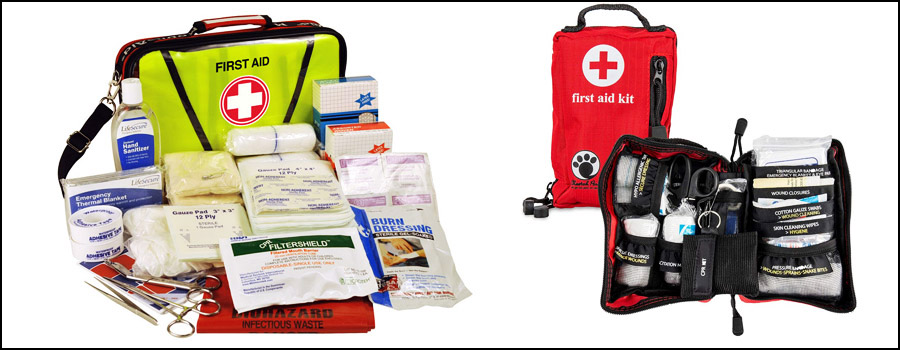
You can, of course, purchase a ready-made first-aid kit for a motorist or tourist in a store. As practice shows, it is more reliable to assemble it yourself. This does not take much time, and most of the components are usually always in the home medicine cabinet. And two more advantages of self-preparation of a fisherman’s first-aid kit: you will remember what funds are in the composition of your first-aid kit and have a guarantee that the medications are not expired.
🔷So, be sure to take with us for fishing in a waterproof container:
- Ammonia (bring cotton wool to the nose when fainting).
- Tincture of iodine (3-5%, better in ampoules, an excellent antiseptic).
- Aspirin (namely, acetyl-salicylic acid in tablets, antipyretic, and analgesic).
- Analgin (tablets, for headache, general pain medication).
- Besalol (tablets reduce cramping, pain medication).
- A styptic tourniquet (will allow temporarily, no more than 1.5-2 hours, to block an artery or vein in the event of a severe cut).
- Adhesive plaster (for fixing dressings or splint during fracture).
- Medical alcohol (antiseptic for external use).
- Bandages (wide and narrow, simple and sterile in packaging).
- Bags for cooling with bruises (2-3 pcs.).
- Medical cotton wool (~ 100 g).
- Elastic bandage (1-2 pcs.).
- Rubber bandage (1-2 pcs.).
- A bactericidal patch (a set of different cuts, for applying to small abrasions and cuts, temporarily).
- Safety pin (5 pieces are convenient for fixing dressings).
- Pantocide (tablets for disinfecting water, 1 tablet is used for 0.5-0.7 liters of water, withstand 15 minutes).
- Panthenol (an aerosol for external use, it has anti-inflammatory, hemostatic, antimicrobial effects – it is indispensable for treating wounds with a large surface: burns, abrasions).
- Validol (tablets, has a calming effect on the central nervous system, has a vasodilating effect, is used for pain in the heart (angina pectoris), neurosis, hysteria, as an antiemetic for sea and airborne diseases, 1 tablet under the tongue).
- Nitroglycerin (tablets, used for severe pain in the heart that does not go away after taking Validol, 1 tablet under the tongue).
- Valocordin or Corvalol (medicine, used for pain in the heart, increased irritability, insomnia, neurosis, 20 drops in a small amount of water).
- Caffeine (pills, stimulates the respiratory and vasomotor centers, enhances the work of the heart muscle. It is used for shock, weakness of the heart, poisoning, and spasms of the brain vessels, 1 tablet per reception).
- Activated charcoal (tablets, with diarrhea, flatulence, acute food poisoning, 1-6 tablets).
It is advisable to always keep such a simple set of medicines while fishing. Health problems that arise during the trip should be addressed with a qualified doctor. You will be able to arrange first aid for yourself or your injured comrade immediately after the incident.
That is why a small, compact, and properly assembled first-aid kit of a fisherman is a very necessary thing. It will not replace you with a full-fledged medical kit for long and long hiking trips and fishing expeditions. She will avoid many inconveniences and troubles.
I think some fishermen will think: well, what a first-aid kit, why carry an extra load with you, if only two steps to the house, to people, and mobile communication is at hand. Nature is beautiful. An abundance of colors, aromas of herbs and flowers, birdsong, and cicadas. Summer, warmth, life boils all around. I would also strongly recommend not to forget to put in a backpack, a good repellent from mosquitoes and other blood-sucking reptiles, and thoroughly treat the clothing before ticks with a tick remover.
A Few Words About The Packaging of the First-Aid Kit and The Storage of Medicines
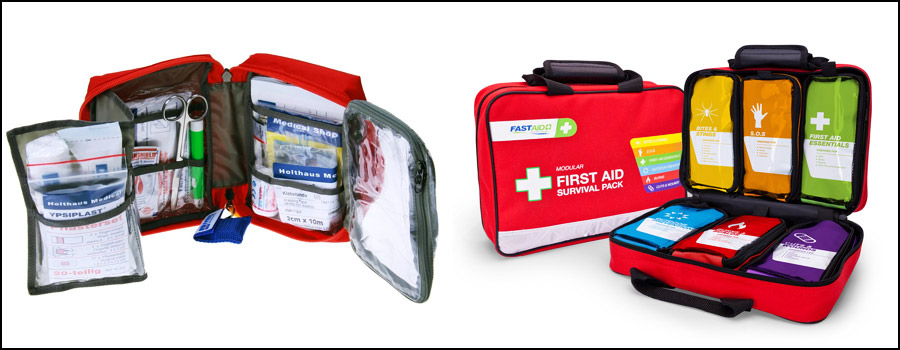
When fishing, I try not to take “medications in a glass package” with me, preferring plastic, or it is advisable to wrap the glass with tape or tape. This, in which case, will serve as additional protection and protect the glass packaging, as well as protect you from splinters, if it does break. Do not stuff drugs and packs into a mini medicine cabinet – a lot. Only the most necessary and in small quantities should be taken. The main thing is that all medicines are labeled, i.e. the name, expiration date is easy to read.
The packaging itself of the first-aid kit, of course, should be light, as well as tight enough to protect the medicine from moisture and dust. The case is durable and moderately hard, not brittle. Fasteners and zippers are reliable. Access to medicines is free. And a little detail from personal experience. In order not to lose and easy to find my first-aid kit in nature, I would like to draw your attention to the color of the package. I think bright red or orange packaging is the most.
Those suffering from chronic diseases will certainly take with them the medicines prescribed by the attending physician. The first-aid kit must be stored away from fire, protected from shock, and from direct sunlight. It is very important to be able to properly pack a first-aid kit. All medicines should be isolated from each other and well fixed. The first-aid kit needs to be stored so that at any time it would be possible to use it without delay. Health to you and that you do not have to use your first-aid kit.
From Bandages to Barb Removers: What’s in Your Fishing First Aid Kit?
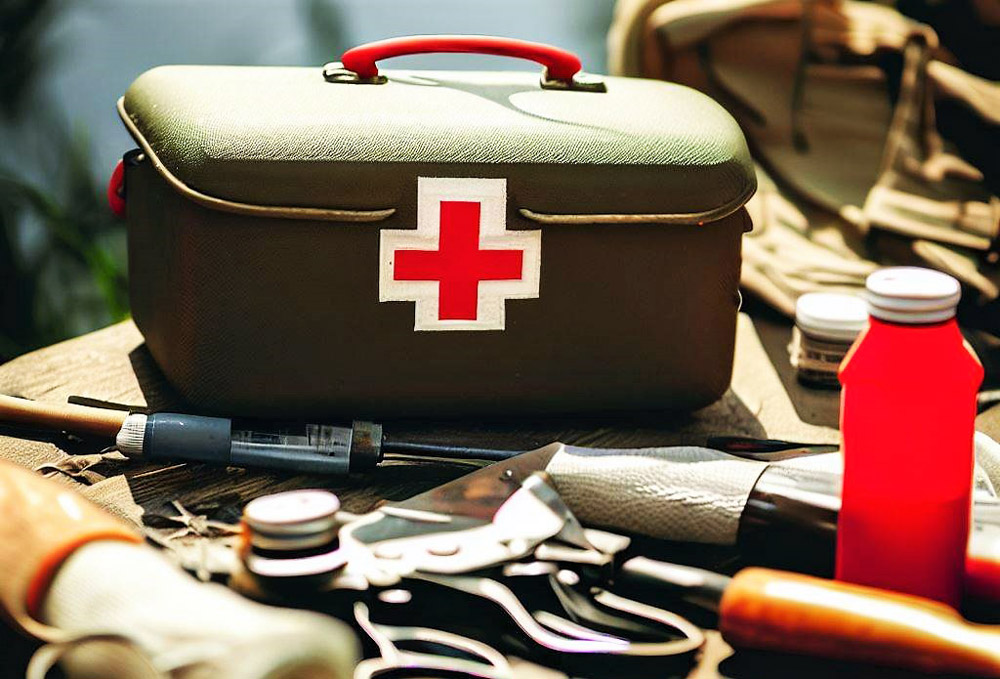
➰Safety Gear Checklist: Essential Items for Your Fishing First Aid Kit
A fishing first aid kit, like any first aid kit, includes several essential items designed to handle various types of injuries. Let’s break down the components by the type of injury they’re designed to treat:
Cuts and Scrapes
🔷These are the most common injuries one might encounter while fishing. Your kit should include:
- Sterile adhesive bandages of various sizes for covering small wounds.
- Sterile gauze pads and adhesive tape for larger wounds or wounds that won’t stop bleeding with a simple bandage.
- Antiseptic wipes or solutions for cleaning wounds.
- Tweezers for removing debris from wounds.
Hook Injuries
🔷Fishing-specific injuries like embedded hooks require special tools and supplies:
- A pair of needle-nose pliers or a specialized hook remover for safely extracting hooks.
- A local anesthetic like lidocaine for numbing the area around a deeply embedded hook.
- Butterfly bandages for closing wounds after hook removal.
Burns
🔷Whether it’s sunburn or a burn from touching a hot part of the boat or cooking gear, it’s good to be prepared:
- Aloe vera gel or a similar burn cream for soothing burns and promoting healing.
- A broad-spectrum, high-SPF sunscreen to prevent sunburn in the first place.
Bites and Stings
🔷Fishing can sometimes lead to encounters with biting insects or stinging aquatic life:
- Antihistamine cream or tablets for treating mild allergic reactions and soothing insect bites.
- Hydrocortisone cream for reducing inflammation and itching from bites.
- Sting relief spray for treating painful stings from jellyfish or other marine animals.
- A snake bite kit if you’re fishing in areas where venomous snakes are common.
🔷In addition to these essentials, a fishing first aid kit should also contain some basic tools and supplies that are universally useful in medical emergencies, such as:
- Medical-grade gloves for protecting both the injured person and the one providing aid.
- A digital thermometer to check for fever.
- Scissors for cutting tape, gauze, or clothing.
- A first aid manual for quick reference in emergencies.
- Emergency blanket for warmth in case of shock or hypothermia.
- Pain relievers, like ibuprofen or acetaminophen.
- An Emergency Whistle to signal for help.
🚩Remember, these are just the basics. Depending on your specific needs, the location, and the type of fishing you’re doing, you may want to customize your kit with additional items. The goal is to ensure that you’re prepared to handle any medical situation that could reasonably arise during your fishing trip.
Personalizing Protection: Customizing Your Fishing First Aid Kit
While the basic contents of a first aid kit remain constant, there’s a degree of personalization involved depending on the type of fishing you plan on undertaking. Different environments and fishing styles bring their unique sets of challenges and potential hazards.
| Fishing Type | Additional First Aid Items | Explanation |
|---|---|---|
| Deep Sea Fishing | Seasickness remedies, heavy-duty puncture-resistant gloves, flares, personal locator beacon | While deep-sea fishing, seasickness can be an issue due to the boat’s motion. Large fish with sharp teeth might require puncture-resistant gloves for handling. Flares or a personal locator beacon are important for signaling in case of emergencies. |
| Fly Fishing | Waterproof bandages or adhesive strips, sunburn relief aids or sun-protective items | Fly fishing usually involves wading in water, increasing the risk of minor injuries that could get wet, hence waterproof bandages. Prolonged exposure to sun also requires sunburn relief aids and sun-protective items. |
| Ice Fishing | Hand warmers, additional emergency blanket, thermal flask, ice bandages | Due to the cold environment, items to treat or prevent hypothermia and frostbite are crucial, such as hand warmers and extra emergency blankets. Ice bandages are useful as they stick even in freezing conditions. |
| Saltwater Fishing in Tropical Areas | Vinegar or specialized sprays for treating jellyfish stings, insect repellent, treatment for insect bites | Tropical areas have diverse marine life including jellyfish; vinegar or specialized sprays can treat stings. Increased bug activity in such locations necessitates insect repellent and treatments for insect bites. |
Remember, these are just additional items to include in your fishing first aid kit; they’re meant to supplement, not replace, the basic first aid items.
The location also matters, especially in terms of how remote it is and the local fauna. For instance, if you’re fishing in areas known for venomous snakes or spiders, antivenom kits could be a vital addition. Similarly, if you’re far from medical facilities, items like a tourniquet, clotting powder, or splints could prove extremely valuable in a severe injury scenario.
Finally, do not overlook personal medical needs. If you or a fishing companion have specific medical conditions, like diabetes, allergies, or heart conditions, make sure to include necessary medications or supplies, such as insulin, EpiPens, or nitroglycerin tablets.
In essence, think of your first aid kit as a work in progress. Tailor it to your specific circumstances, needs, and experiences, and don’t hesitate to update it as these factors change. The aim is to ensure you can respond effectively to any injury or illness that comes your way, enabling you to fish with confidence and peace of mind.
Preserving Preparedness: Maintaining Your Fishing First Aid Kit
Having a well-stocked fishing first aid kit is only half the battle – maintaining it properly ensures that it can serve its purpose effectively when required. Regular checks and upkeep of your kit are as vital as the items within it.
Safety Shelf Life: The Importance of Maintaining Your First Aid Kit
A crucial point to remember is that the contents of a first aid kit have a finite shelf life. Over time, bandages lose their stickiness, creams, and ointments can dry out or separate, and medicines may become less effective or even harmful after their expiry dates. Therefore, regular checks, ideally before each fishing trip, are essential to ensure all components are present, in good condition, and within their usage dates.
If you find expired or damaged items, replace them promptly. Don’t forget to replenish items you’ve used on your last trip. It’s a good idea to keep a checklist of your kit’s contents, making it easier to spot missing or used-up items.
🔷Storage plays a significant role in maintaining the usability and effectiveness of your kit. Here are some key points to keep in mind:
| Storage Tip | Explanation |
|---|---|
| Keep It Dry | Adhesive bandages and other first aid kit components are susceptible to moisture. A waterproof box or bag is ideal for preventing water damage, a real concern in a fishing environment. |
| Avoid Extreme Temperatures | Both high and low temperatures can affect the integrity and effectiveness of items in your kit, such as creams, ointments, or plastic components. Aim for a storage location that maintains a moderate temperature. |
| Easily Accessible | In an emergency, time is of the essence. Storing your kit in an easily accessible location means you won’t waste valuable time digging through other equipment to find it. |
| Safe from Damage | A sturdy, durable container can protect your first aid kit from being damaged if it’s knocked around or dropped. Store sharp objects separately to prevent accidental punctures or cuts to the kit or its components. |
These tips will help ensure that your fishing first aid kit is ready to use when needed, helping you to maintain safety on your fishing expeditions.
Stay Stocked: Keeping Your Fishing First Aid Kit Up-to-Date
Lastly, it’s wise to familiarize yourself and your fishing buddies with the contents of your first aid kit and how to use them. In an emergency, knowing exactly what you have and where it is can save crucial time and prevent further complications.
Your fishing first aid kit is a lifeline in the face of injury or illness. By ensuring it’s consistently checked, restocked, and correctly stored, you’ll be ready to handle whatever your fishing adventures throw at you, ensuring safer and more enjoyable trips.
When Theory Meets Practice: Real-life Usage of Fishing First Aid Kits

First Aid Field Stories: Real-Life Uses of a Fishing First Aid Kit
🔷Understanding the importance and effective usage of a fishing first aid kit is best reinforced by real-life scenarios. Let’s dive into a couple of stories from the angling world where a first aid kit made a crucial difference:
| Scenario | First Aid Action | Explanation |
|---|---|---|
| The Unseen Hook | Used a hook remover and lidocaine from the first aid kit to numb the area, remove the hook, clean the wound, and dress it. | Sam, while fishing in a tournament, accidentally embedded a hook into his hand. He was prepared with the right tools in his first aid kit. By treating the wound quickly, he managed to continue fishing instead of ending his participation in the tournament. |
| The Unexpected Allergic Reaction | Applied vinegar to the jellyfish sting and took an antihistamine from the first aid kit. | During a saltwater fishing trip, Mike was stung by a jellyfish. He managed to neutralize the sting and counteract the allergic reaction using items from his first aid kit, preventing a potentially dangerous situation. |
These real-life examples illustrate the importance of having a well-stocked and diverse fishing first aid kit. You never know what might happen on a fishing expedition, but being prepared can make all the difference.
First Response on the River: How to Use Your Fishing First Aid Kit
🔷These scenarios underline the significance of a first aid kit while fishing. But having the kit is only part of the solution; knowing how to use the items effectively in an emergency is equally important:
- Firstly, familiarize yourself with each item in your kit, its purpose, and its correct usage. If you’ve included a hook remover but don’t know how to use it, it won’t be much help in an emergency.
- Secondly, consider taking a basic first aid course, many of which are available online. This training can give you the confidence to handle emergencies calmly and effectively.
- Lastly, make a plan. In each potential emergency scenario, know what steps you’ll need to take, which items you’ll need, and in what order to use them. This preparation can save precious time in an emergency.
🚩Fishing first aid kits aren’t merely boxes filled with bandages and antiseptics; they’re collections of potential life-saving tools. By understanding how to use these tools effectively, you can turn a potential disaster into a manageable situation, making your fishing adventures safer and more enjoyable.
Your Safety, Your Responsibility: Time to Check Your First Aid Kit
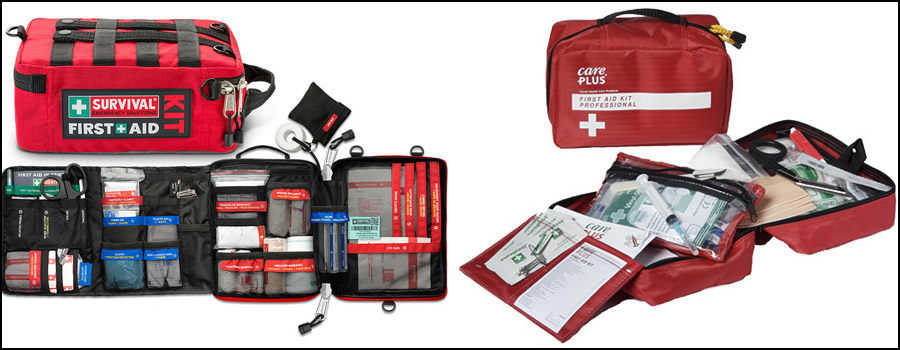
Having delved deep into the importance of a fishing first aid kit, it’s now your turn to ensure you’re prepared for your fishing escapades.
If you already own a first aid kit, take a moment to assess its contents. Are all the items in good condition, and within their expiration dates? Is it missing any essentials? Is it customized to cater to your specific fishing needs? If the answer to any of these questions is ‘yes,’ it’s time for an update.
For those who don’t yet have a fishing first aid kit, let this be the nudge you need to create one. Use the information in this article as a guide, and tailor your kit to your needs and the environments you typically fish in.
Remember, safety should never be optional. A well-stocked and maintained first aid kit is as essential on a fishing trip as your rod, bait, and tackle box. By prioritizing safety, you ensure not just a successful fishing trip, but a safer one too.
With your first aid kit in place, you’re equipped to handle any mishaps or emergencies that may occur, ensuring you can fully enjoy the peace and thrill that fishing provides.
So, take the plunge, create or update your first aid kit, and let your fishing adventure begin. Stay safe, enjoy, and here’s to land your next big catch!
🚩And remember, the greatest stories are those told safely on the return journey. As we part ways here, let’s raise our fishing hats to safe and fulfilling fishing adventures ahead!
Frequently Asked Questions about Fishing First Aid Kits
Conclusion: The Ultimate Mantra for Every Angler
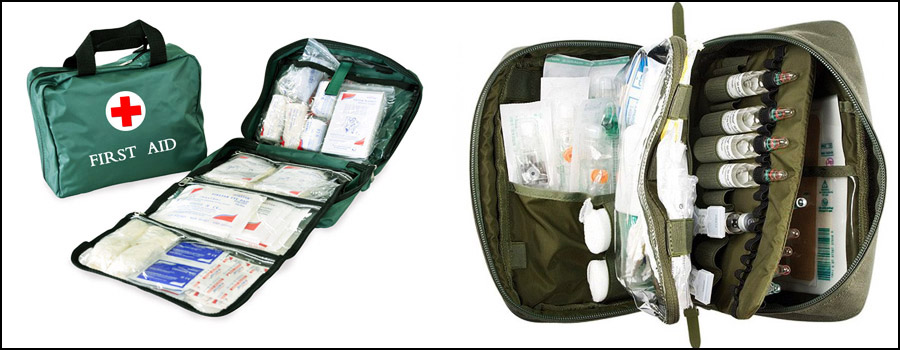
As we’ve navigated through this article, we’ve dissected the anatomy of a fishing first aid kit, explored its customization based on various fishing styles and environments, discussed the importance of regular maintenance, and understood its practical usage through real-life scenarios.
Safety as Your Catch: The Lasting Importance of Your Fishing First Aid Kit
In essence, a fishing first aid kit is your safety net on any fishing adventure. Just as an angler wouldn’t set sail without their fishing rod or tackle box, a well-stocked and maintained first aid kit should be an integral part of your fishing gear.
However, the kit is more than just a collection of medical supplies; it’s a commitment to safety and preparedness. It’s a tool that empowers you to react swiftly and effectively in an emergency, potentially preventing a minor injury from escalating into a major one or even saving a life.
As you prepare for your next fishing trip, let’s take the lessons imparted in this article to heart. Understand the importance of a first aid kit, customize it to your needs, maintain it regularly, and equip yourself with the knowledge of how to use it.
Reeling in Responsibility: Prioritizing Safety on Your Fishing Adventures
Remember, the greatest catch is not the trophy fish but the assurance that you and your fellow anglers return home safely. Prioritize safety, always be prepared, and enjoy the peace of mind that comes with knowing you’re ready to handle any emergencies that may arise.
The line is cast, the journey awaits, and with your fishing first aid kit by your side, you’re ready for whatever the great outdoors has to offer. Happy fishing, and stay safe out there!
Tags: #best first aid kit for fishing / #first aid kit for fishing boat / #best first aid kit fishing / #best marine first aid kits

I live in Tenerife (Canary Islands) for the last 10+ years and share my daily fishing experiences on my website. Many years of personal experience as a fisherman and the vast experience of my friends allow me to write professionally on any fishing topics (from choosing a flashlight and equipment to deep-sea fishing).
All of my advice is based on practical real-world experience and will be useful to both novice anglers and professionals. Read more about the author.
Affiliate Disclosure: FishReeler.org sometimes gets paid for listings, through sponsors or affiliate programs like Amazon, Ebay, Cabelas, Bass Pro Shop, Shimano, Daiwa, Rapala, Renn, Okuma, KastKing, etс. Clicking a link helps keep FishReeler.org free, at no extra cost to you!
About the author: Each article is verified by the fishing expert Sergio Smirnoff. The articles are written by professional and amateur fishermen with 20+ years of fishing experience.
Note: The views and opinions expressed in this article are those of the authors and do not necessarily reflect the official policy or position of any agency. The articles are for informational purposes only, share your opinions in the comments and join the fishing discussions, let's share our fishing experiences together!


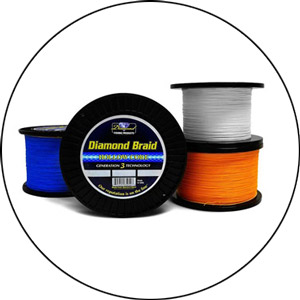
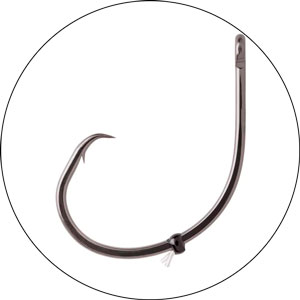

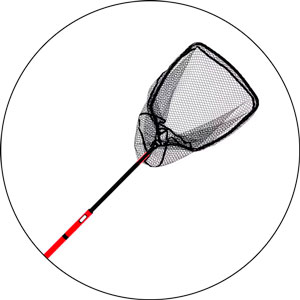
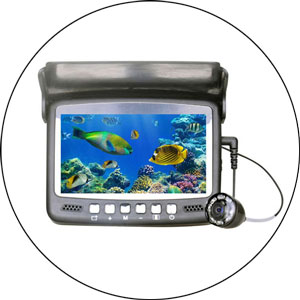
This article perfectly captures the essence of safety while fishing. Last summer, I too experienced a close call when I cut myself on a fishing line. It wasn’t severe but the nearest medical facility was miles away. The antiseptic and bandages in my first aid kit were lifesavers. Your point about being equipped to deal with the unexpected resonates deeply with me.
Thank you for addressing the importance of a well-stocked first aid kit. Many beginners overlook the potential dangers of fishing, focusing more on the catch than safety. I hope this article reaches every novice angler out there. The simplicity of your language makes the article a comprehensive and easy guide for anyone.
I appreciate the emphasis on understanding the risks involved in fishing. So many anglers just grab their gear and head out without giving a second thought to potential hazards. Remembering to pack sunscreen was a game-changer for me. The article provides a much-needed reminder about safety measures for all fishing enthusiasts.
Great read! I couldn’t agree more on the importance of a first aid kit. I particularly like how you’ve explained the need for customization based on the type of fishing one is engaged in. It’s a point that is often overlooked but incredibly important.
I’ve been fishing for years and it’s not often you come across an article that so thoroughly addresses the safety aspect of the sport. Your take on the relevance of a fishing first aid kit is spot on. I believe every angler, seasoned or not, should have this information at their fingertips.
It’s unfortunate but true that accidents and injuries have become increasingly common in recent years. Your article is a timely reminder that preparedness can make all the difference. Thanks for this informative piece – it’s a must-read for every angler out there!
Very few articles are written on this subject. That is why I have tried as much as possible to outline the importance of the topic and what to do. If you and I meet a fisherman on a lake or river, I think few people will have a first aid kit with them. In the best case, medical kits will be on a fishing trip from a boat of unknown validity and variety. That’s why I’ve spent so much time on the topic of water safety.